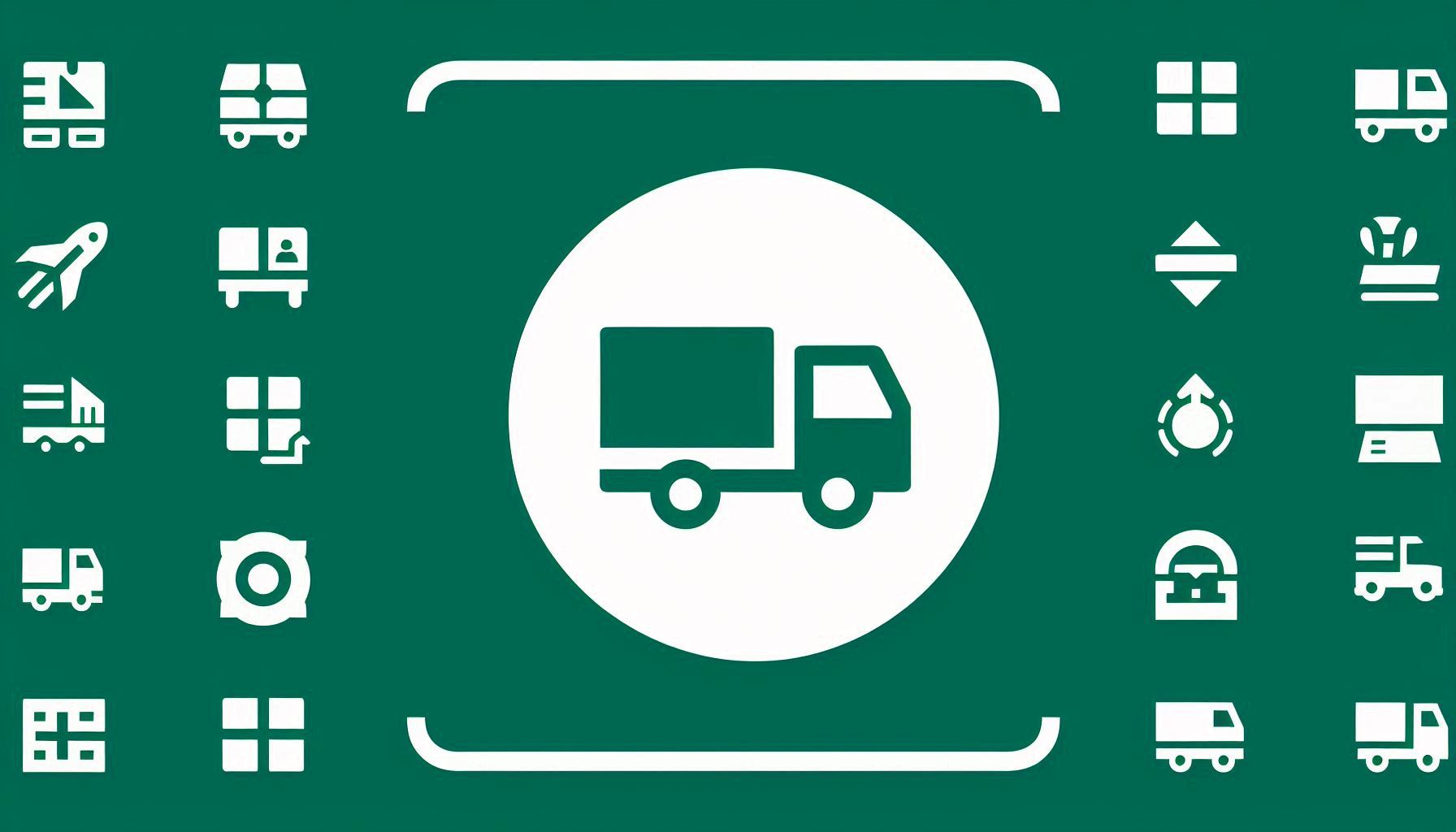Research on the Operation Strategy of Rural Logistics Network with Comprehensive Consideration of Cost, Efficiency and Benefit

Downloads
The high-cost and low-efficiency rural logistics network is a bottleneck that restricts the flow of commodities and economic development between urban and rural areas. In view of this, this paper uses the system dynamics modelling method to first analyse the constituent elements of the rural logistics network operation system and the relationship between them and draw the causal diagram. Secondly, quantify the causal diagram with the dynamics equations, and establish the stock and flow diagram. Thirdly, set the relevant parameters, and carry out the structural, parametric and sensitivity tests with Vensim software. Finally, for the scenarios of dealing with general commodities and fresh agricultural products, the simulation of rural logistics network operation is carried out, which reveals the feedback mechanism between network operation efficiency, logistics cost and operating enterprise benefits, and simulates the implementation effects of different operation strategies from both endogenous and exogenous levels to explore how to build a rural logistics network with high efficiency, low cost and increased benefits. The results show that networked, organised and intelligent operation plans, logistics land use policies, and carbon tax policies are high-leverage measures to reduce cost and increase efficiency in rural logistics networks. However, attention should be paid to distinguishing between implementation stages and the attributes of the implemented enterprises, focusing on the reduction of logistics land cost at the early stage of network construction, levying logistics carbon tax and paying attention to the reduction of the transport fee rate at the mature stage of network operation and increasing policy preferences for fresh agricultural products logistics enterprises.
Downloads
Wang Z, Li T, Huang WJ. Connotation, components and research framework of urban-rural logistics network from spatial perspective. Geoscience. 2023;43:82-91. DOI: 10.13249/j.cnki.sgs.2023.01.009.
Yao GX, Mao RH, Zhang DM. Overview of the connotation, necessity, and development strategies of rural logistics from the perspective of low-carbon economy. Logistics Technology. 2019;42(12):108-110. DOI: 10.13714/j.cnki.1002-3100.2019.12.028.
Bian X, Xu J. Towards low-carbon transition: Coordinating development and decarbonisation in rural logistics. Systems Research and Behavioral Science. 2024;41(1):173–206. DOI: 10.1002/sres.2944.
Shepherd SP. A review of system dynamics models applied in transportation. Transportmetrica B: Transport Dynamics. 2014;2(2):83–105. DOI: 10.1080/21680566.2014.916236.
Madelin G, Lahrichi N. Modeling and improving the logistic distribution network of a hospital. Intl. Trans. in Op. Res. 2021;28:70-90. DOI: 10.1111/itor.12697.
Shi YH, et al. A simulation-optimization system for recycling logistics network of recyclable express packaging. Computers & Industrial Engineering. 2024;189:109949. DOI: 10.1016/j.cie.2024.109949.
Zhang JH, Long ZY, Li YC. A reliable emergency logistics network for COVID-19 considering the uncertain time-varying demands. Transportation Research Part E: Logistics and Transportation Review. 2023;172:103087. DOI: 10.1016/j.tre.2023.103087.
Takahiro E, Naoto L, Katsuhiro N. Reinforcing critical links for robust network logistics: A centrality measure for substitutability. Journal of Physics Communications. 2023;7(2):025001. DOI: 10.1088/2399-6528/acb7c9.
Jiang YP, et al. A time space network optimization model for integrated fresh fruit harvest and distribution considering maturity. Computers & Industrial Engineering. 2024;190:110029. DOI: 10.1016/j.cie.2024.110029.
Zhu TX, et al. A bilevel programming model for designing a collaborative network for regional railway transportation and logistics: The case of the Beijing-Tianjin-Hebei region in China. Journal of Advanced Transportation. 2024;8905446:15. DOI: 10.1155/2024/8905446.
Peng P, et al. A multi-layer modelling approach for mining versatile ports of a global maritime transportation network. International Journal of Digital Earth. 2023;16(1):2129-2151. DOI: 10.1080/17538947.2023.2220614.
Wang B, et al. Hub-and-spoke network optimization with flow delay cost: The case of goods delivery on urban logistics networks in eastern China. Mathematics. 2024;12:1496. DOI: 10.3390/math12101496.
Li ZC, Bing X, Fu X. A hierarchical hub location model for the integrated design of urban and rural logistics networks under demand uncertainty. Ann Oper Res. 2023;7:1-22. DOI: 10.1007/s10479-023-05189-6.
Sinaga T, Hidayat Y, Wangsaputra R, et al. The development of a conceptual rural logistics system model to improve products distribution in Indonesia. Journal of Industrial Engineering and Management. 2022;15(4):670-687. DOI: 10.3926/jiem.4011.
Zhang Q, Mao H. An integrated method for locating logistic centers in a rural area. Sustainability. 2022;14:5563. DOI: 10.3390/su14095563.
Peng YT, Du JG, Luo JQ. Research on optimization of urban-rural distribution network based on new urbanisation. Soft Science. 2016;30:136-139. DOI:10.13956/j.ss.1001-8409.2016.05.29.
Peng YT, Li YY. Research on optimization of urban logistics network based on variational inequality. Practice and Understanding of Mathematics. 2018;48(9):48-59.
Yulia V, et al. Does delivery service differentiation matter? Comparing rural to urban e-consumer satisfaction and retention. Journal of Business Research. 2022;142:476-484. DOI: 10.1016/j.jbusres.2021.12.079.
Dai D, et al. Two-stage delivery system for last mile logistics in rural areas: Truck–drone approach. Systems. 2024;12:121. DOI: 10.3390/systems12040121.
Fei Y, Ying D, Zu JM. A cooperative rich vehicle routing problem in the last-mile logistics industry in rural areas. Transportation Research Part E: Logistics and Transportation Review. 2020;141:102024. DOI: 10.1016/j.tre.2020.102024.
He DD, Guan W. Promoting service quality with incentive contracts in rural bus integrated passenger-freight service. Transportation Research Part A: Policy and Practice. 2023;175:103781. DOI: 10.1016/j.tra.2023.103781.
Dovbischuk I. Sustainability in logistics service quality: Evidence from agri-food supply chain in Ukraine. Sustainability. 2023;15:3534. DOI: 10.3390/su15043534.
Zhang XN, et al. Optimization of rural three-level logistics network layout under the perspective of e-commerce poverty alleviation. Mechanical Design and Manufacturing. 2023;(11):282-286. DOI:10.19356/j.cnki.1001-3997.20230525.026.
Yao GX, Zhu CJ, Dai PQ. Research on the construction of hybrid axial-spoke urban-rural integrated logistics network. Industrial Engineering. 2019;22 (6): 1-7.
Li ZC, Bing X, Fu X. A hierarchical hub location model for the integrated design of urban and rural logistics networks under demand uncertainty. Annals of Operations Research. 2023. DOI: 10.1007/s10479-023-05189-6.
Luo H. Research on rural logistics network construction based on common distribution. Dalian Jiaotong University. 2023. DOI: 10.26990/d.cnki.gsltc.2023.000308.
Hong W, Du C, Xu SL, Pu XJ. Routing optimization of two-echelon two-way logistics in rural areas based on e-commerce environment. Transportation Research Record. 2024;8. DOI: 10.1177/03611981241263343.
Wang HZ, Ran HJ, Zhang SH. Location-routing optimization problem of country-township-village three-level green logistics network considering fuel-electric mixed fleets under carbon emission regulation. Computers & Industrial Engineering. 2024;194:110343. DOI: 10.1016/j.cie.2024.110343.
Abbas KA, Bell MG. System dynamics applicability to transportation modeling. Transportation Research Part A: Policy and Practice. 1994;28(5):373–390. DOI: 10.1016/0965-8564.
Bian X, Xu J. How to deal with the trade-off between development and decarbonization for rural logistics in China? Evidence from Jiangsu. J. Syst. Sci. Syst. Eng. 2023;32:656–686. DOI: 10.1007/s11518-023-5575-7.
Wang YF, Huang YF. Optimization of hybrid hub-and-spoke transport network for port clusters considering carbon emissions. Journal of Beijing Institute of Technology (Social Science Edition). 2014;16(5):42-50. DOI: 10.15918/j.jbitss1009-3370.2014.05.033
Copyright (c) 2025 Panqian DAI, Chenglin LU, Jing XU

This work is licensed under a Creative Commons Attribution-NonCommercial 4.0 International License.




















